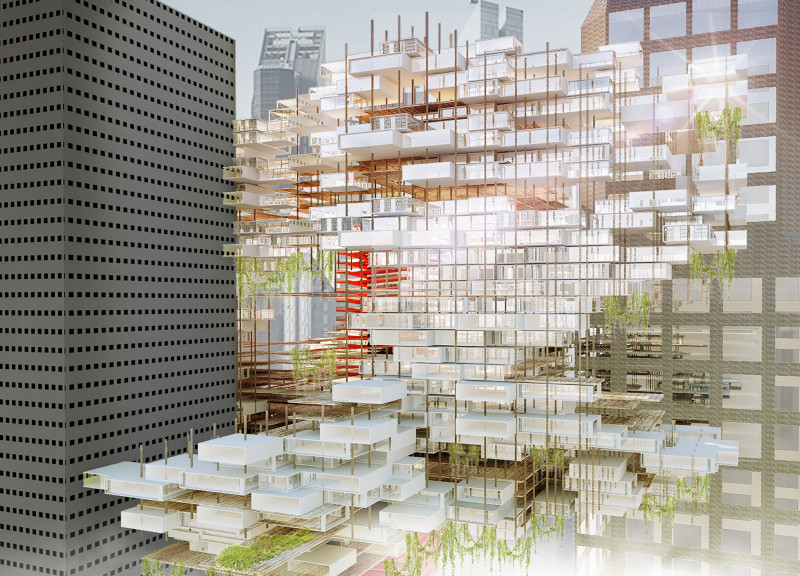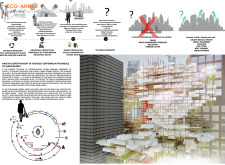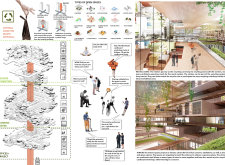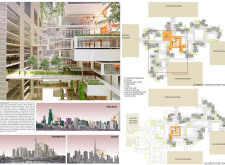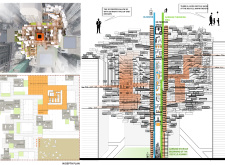5 key facts about this project
### Project Overview
The Eco-Annex is located in an urban setting characterized by challenges such as overpopulation, waste management, and pollution. Designed as a multifunctional community hub, it focuses on sustainability by facilitating engagement, education, and innovation. This initiative aims to create a self-sustaining ecosystem that integrates natural elements and technology, addressing the pressing needs of urban living.
### Structural Planning and Communal Spaces
The layout integrates both existing buildings and new additions, forming an interconnected network of spaces that promotes social interaction. Multiple levels are allocated for various activities, including leisure, learning, and exhibitions, while informal gathering areas known as ‘In Between Spaces’ connect distinct sections of the facility. The project emphasizes open spaces—such as gardens, amphitheaters, and sports areas—that enhance community engagement and strengthen the relationship between urban residents and nature. Educational workshops related to recycling and sustainable practices are embedded within these spaces, encouraging active participation in eco-centric activities.
### Material Selection and Sustainability Initiatives
Sustainable and locally sourced materials are a cornerstone of the Eco-Annex's design. Recycled concrete forms the structural framework, reducing waste while ensuring durability. Wood from sustainably managed forests is incorporated for its aesthetic and structural qualities. The strategic use of glass enhances natural light within the interiors and emphasizes transparency in the waste management process. Features such as green roofs not only support biodiversity but also provide insulation, combating urban heat. Additionally, the incorporation of 3D-printed components minimizes material waste and allows for design customization.
The project also features a central Recycling Core, which serves as a functional area for waste management education. This core functions as a hub where community members can engage in recycling initiatives, fostering a culture of ecological responsibility. Vertical gardens are integrated throughout the design, improving air quality and creating habitats for local wildlife. Adaptability is a key aspect of the design, allowing spaces to evolve in response to community needs and reinforcing a commitment to sustainability within urban planning.


